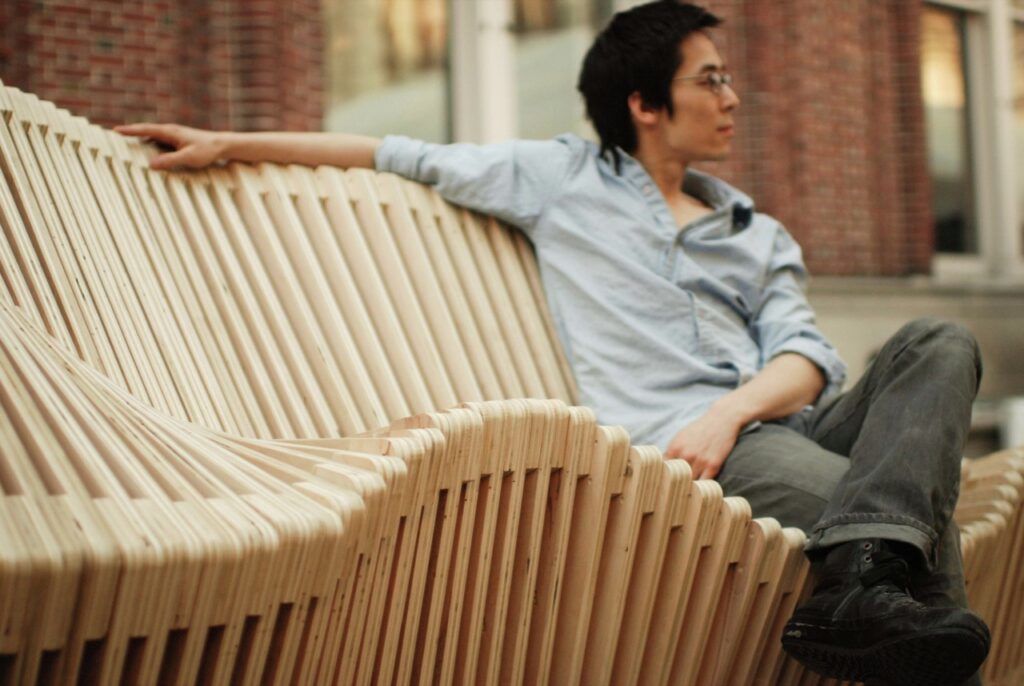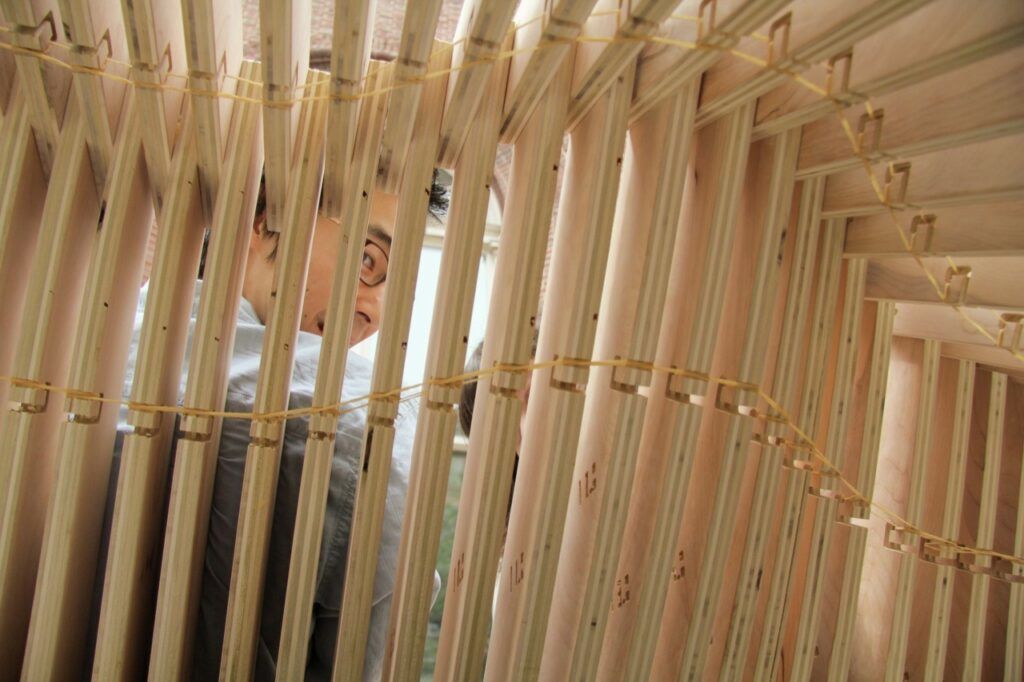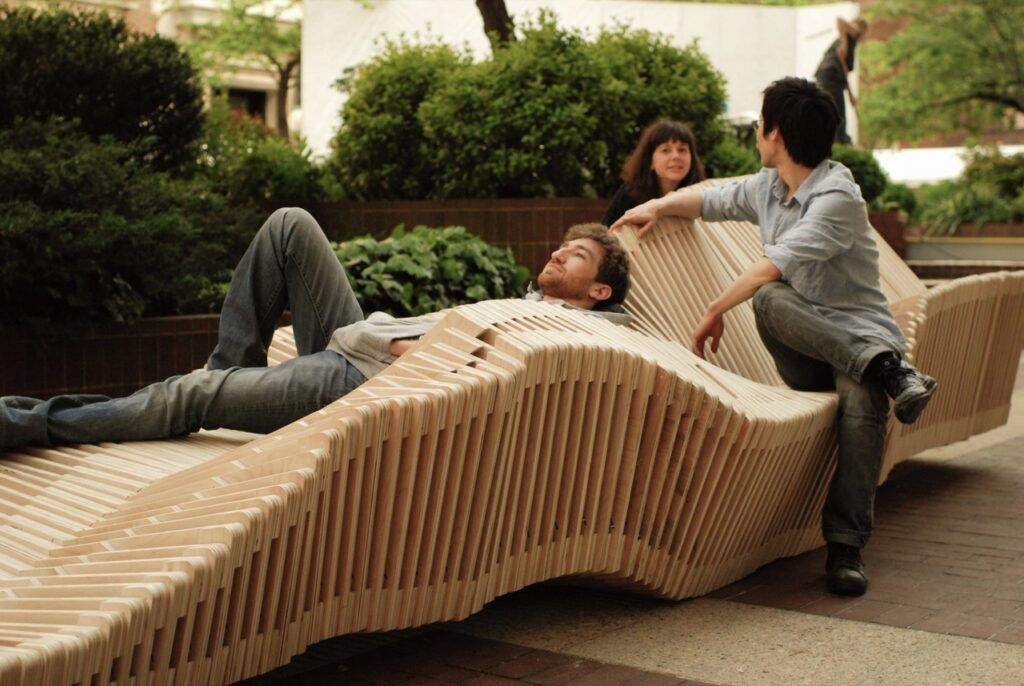Shapeshifting Slinky-Inspired Kinetic Bench

10 people, 18 sheets of plywood, 119 sections, 928 pieces, a $1000 budget and endless potential permutations – this wooden seating proposition takes its inspiration from kinetic Slinkies and reverberating see-saws, but is rigorously engineered and ergonomically sound.

A pivot-and-bold system translates motion up and down the length of the bench, dubbed Polymorphic by its Columbia University student creators, causing the thin sectional CNC-cut slices to move in relation to one another.

Part art installation, part chaise lounge and entirely interactive, engineering and ergonomics both respond to and drive the design: “a series of internal notches linked together by elastic bands and reinforced by couplings located on the central pivot rods prevent lateral movement and ensures safety during motion …. While the overall form of the bench is realized as a continuous landscape, each seating condition was designed according to existing ergonomic profiles in order to maximize comfort and functionality.”

As a graduate school project, it is both a practical experiment and a practice run with a larger aim in mind to “test of the limits and capabilities of digital fabrication and its role in advancing architectural and industrial design practices.”

“The form of the design can likewise be readily adjusted to suit the conditions and contextual requirements of various spaces and environments. The scalability of the joint system and design together creates a truly parametric system in which its use is not only for aesthetics, but for construction, functionality, and comfort as well.”
Via Archdaily:
“At its core, the design of the installation is not only an inventive solution to a design idea, but also a test of the limits and capabilities of digital fabrication and its role in advancing architectural and industrial design practices. While the installation had a designated scale and dimension, the developed system has the ability to grow much larger and wider depending on the availability of resources and materials. The form of the design can likewise be readily adjusted to suit the conditions and contextual requirements of various spaces and environments. The scalability of the joint system and design together creates a truly parametric system in which its use is not only for aesthetics, but for construction, functionality, and comfort as well.”